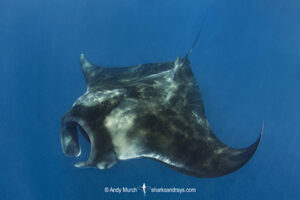Atlantic Manta Ray, Manta yarae. Aka Caribbean Manta, Isla Mujeres, Mexico, Atlantic Ocean.
All images are the property of Andy Murch. No images may be copied or reproduced without prior consent. If you wish to acquire high resolution images for commercial purposes please contact us.
Shark and Rays’ creator Andy Murch is a professional wildlife photographer and CEO of Big Fish Expeditions. SharkAndRays.com is one of the largest independent sources of information about sharks and rays online.
Contact us
© 2025 Sharks and Rays. Big Fish Expeditions

